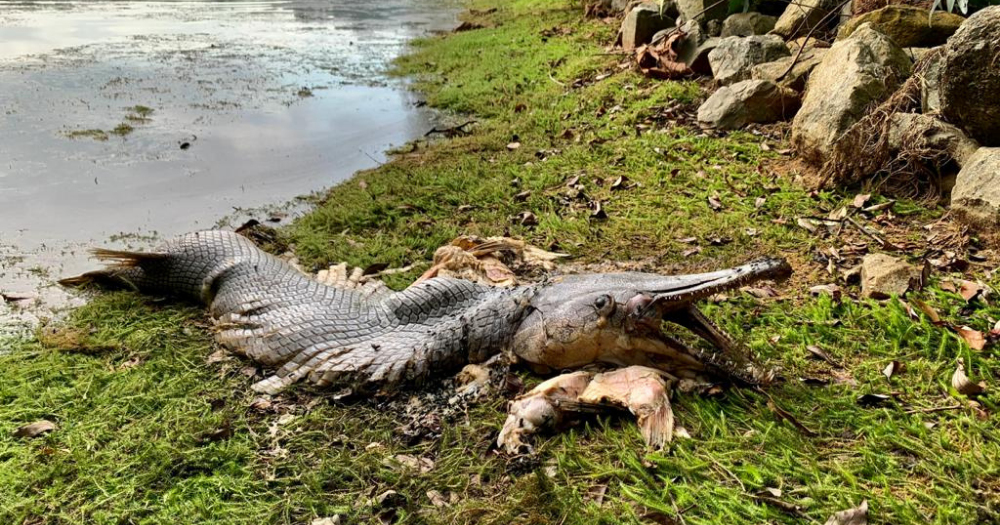Follow us on Telegram for the latest updates: https://t.me/mothershipsg
Strolling through Singapore's large nature reserve network is often a soothing pursuit, observing greenery and spotting the occasional wild creature.
One visitor though, spotted a more intriguing sight.
Monster??
Here is the prehistoric-looking 'monstrosity' Karen Lythgoe came across, and shared on Nature Society Singapore's Facebook page on Feb. 14.
The creature's carcass appears to have washed ashore the banks of MacRitchie Reservoir.
Here's a photo Lythgoe snapped, showing the dead animal's maw wide-open, revealing a row of small, sharp teeth.
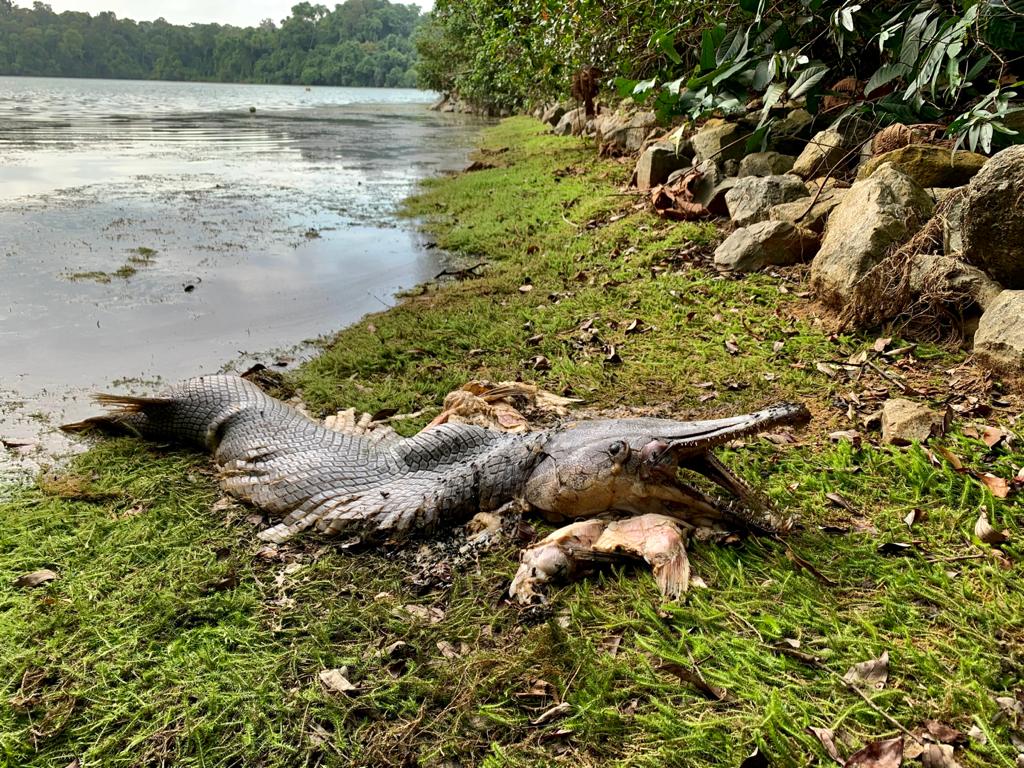 Photo from Karen Lythgoe / FB
Photo from Karen Lythgoe / FB
Here's an even closer look.
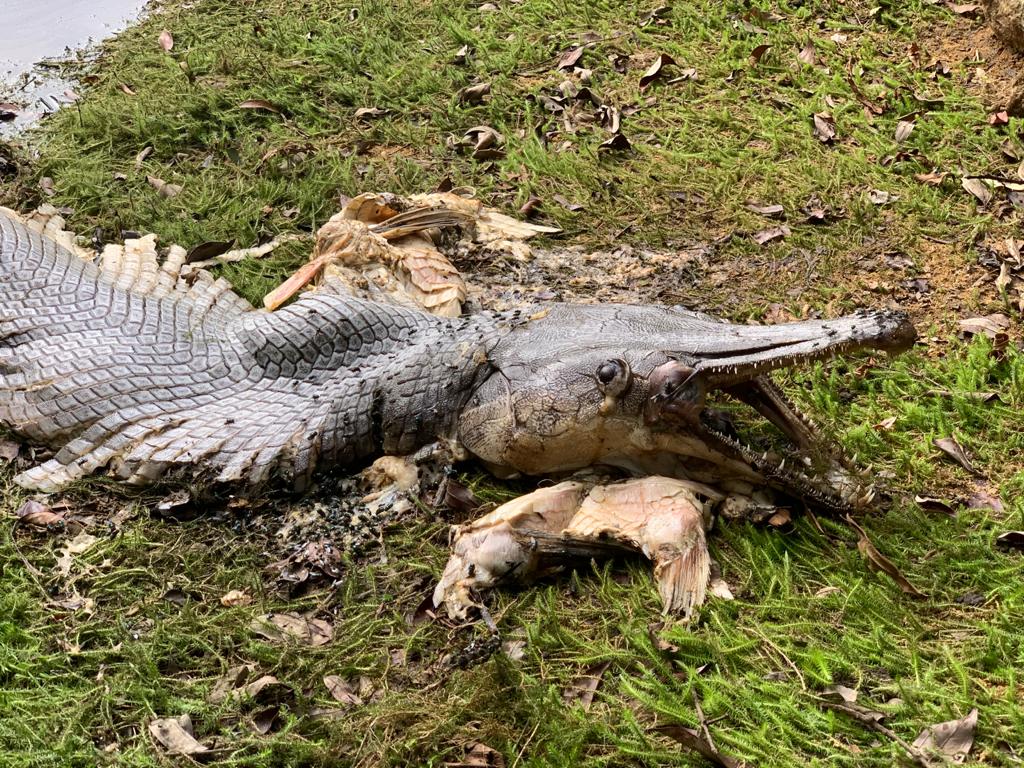 Photo from Karen Lythgoe / FB
Photo from Karen Lythgoe / FB
In less than a day, Lythgoe's post garnered over 1,000 shares at the time of writing.
lt's understandable really, considering the overall bizarre look of the creature, like something out of a nightmare.
With the repeating pattern of scales on its body, some Facebook commenters suggested that it might be the decomposing remains of an alligator.
Huge fishes
The creature's identity soon came to light though — it was not an alligator, but an alligator gar.
Other than its name, alligator gars bear no other resemblance to actual alligators, aside from the long snouts from which their name was derived.
Alligator gars are an invasive species and not native to Singapore. Those found in Singapore's freshwaters now could have been individuals previously kept as pets and subsequently released.
These fish are sold in the local aquarium trade, but due to their voracious appetite and ability to grow to great lengths, often outgrow tanks at home.
Alligator gars can grow up to 3m in length. A 1.5m individual was caught in a Pasir Ris canal in 2011 by two recreational fishermen.
Here's what an alligator gar looks like intact, and not yet decomposed.
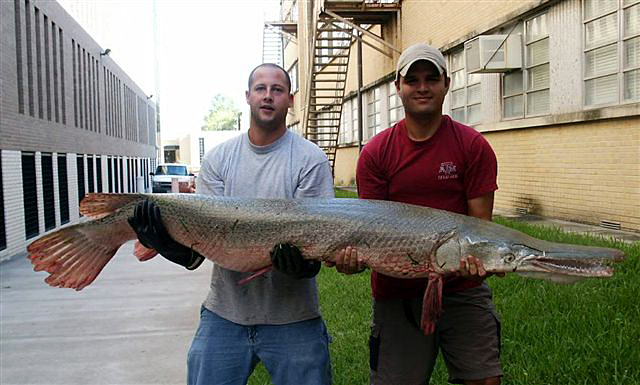 Photo from Wikipedia
Photo from Wikipedia
Monitor lizard spotted eating alligator gar carcass
If you thought alligator gars look pretty prehistoric, that's because they are — the scientific family that gars belong to has a lineage that dates back to dinosaur times, or around 157 million years ago.
Alligator gars are also referred to as "living fossils" as they retain certain attributes remarkably similar to their ancestors, with little to no changes over the decades.
Facebook users speculated that the alligator gar Lythgoe photographed was the same as that in a previous Feb. 13 post in the same nature group.
A video posted by one Yvonne Wong showed a monitor lizard feasting on a gar's carcass.
However, it is uncertain if this is really the same gar individual, or if this video was filmed at MacRitchie.
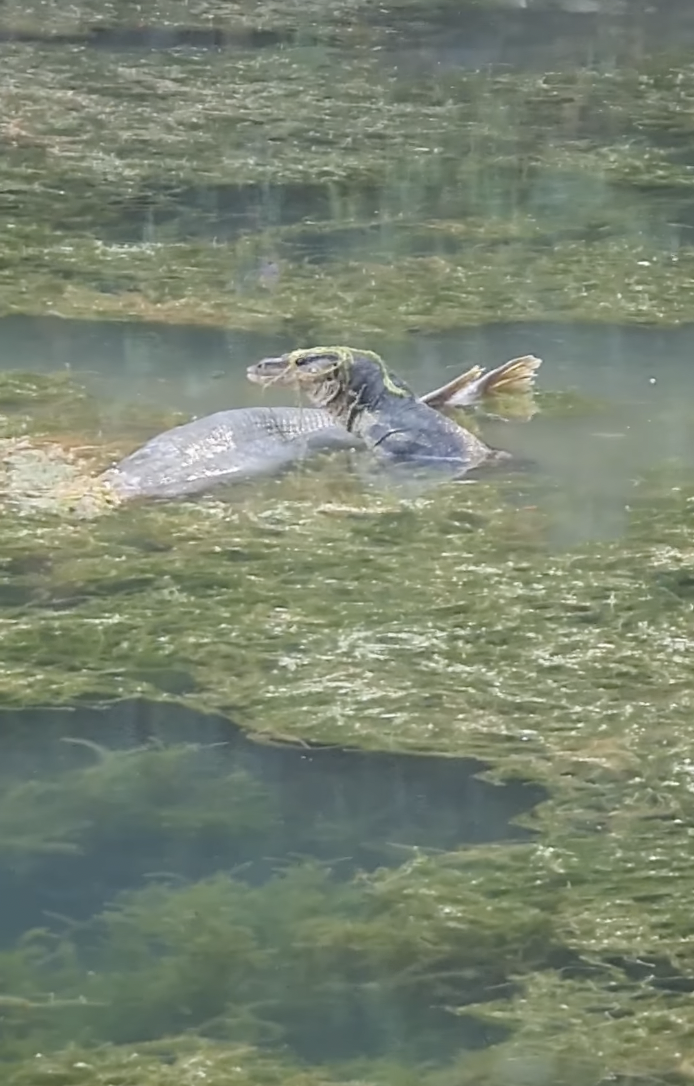 Screenshot from Yvonne Wong / FB
Screenshot from Yvonne Wong / FB
Top photo from Karen Lythgoe / FB
If you like what you read, follow us on Facebook, Instagram, Twitter and Telegram to get the latest updates.
